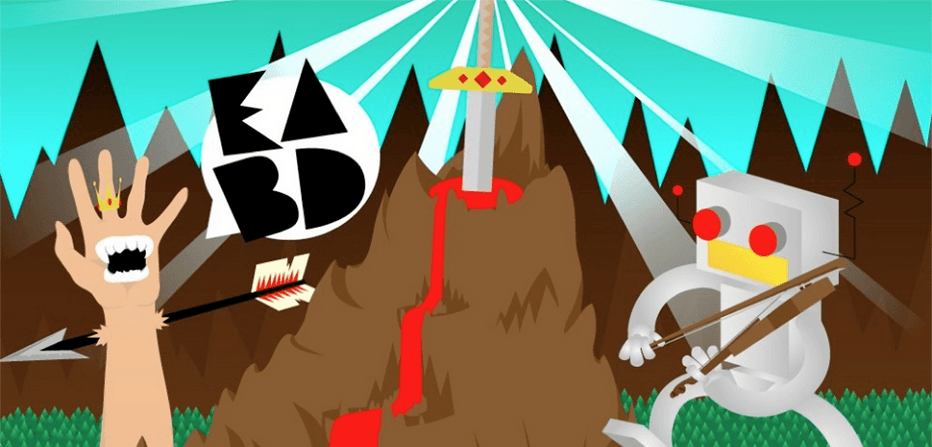UMW’s electronic music course showcases unusual music style during weekend concert
4 min read
Mark Snyder | Electroacoustic Barn Dance event page
By RACHEL MANNING
Over the course of the weekend, the University of Mary Washington held its fifth annual Electroacoustic Barn Dance concert series. Beginning on Thursday, Oct. 1 and ending on Sunday Oct. 4, there were nine concerts that took place between Pollard Hall and the Digital Auditorium.
The music played at these concerts was not something that most people would recognize as traditional music. Electroacoustic is a modern and experimental genre, but it comes out of classical tradition, according to Stephen Beck, composer and former president of the Society of the Electroacoustic Musicians of the United States.
Jim Bramnick, sophomore and computer science major, arrived at one of the Saturday concerts new to the genre, and was surprised at what he encountered. “I was surprised to see that this type of music has as big a following as it does. I really don’t see the appeal,” Bramnick said.
Stephen Beck explains that, “The theory [of Electroacoustic sound] goes back to the turn of the century and the Italian futurists, who were trying to identify sounds that reflected the industrial world they lived in.”
In other words, the classical composers tried to emulate the sounds of nature, and now electroacoustic composers are trying to integrate the sounds of industry and technology. This is why composers in this genre do not always use traditional instruments in their pieces.
The concert event has grown a lot since it started five years ago, according to Mark Snyder, assistant professor of music, who founded and directed it.
“There is much more participation,” Snyder said. “[Electroacoustic music ] is a little more challenging and thought-provoking than what you might hear on the radio, but I think that’s part of the appeal.”
Each concert even began with student pieces, as a part of Snyder’s Electronic Music course.
For example, Flannery Collins, a senior computer science major, used sounds he heard while in the Hurley Convergence Center to arrange his piece, which was performed at 4 p.m. on Saturday in the Digital Auditorium.
“I used sounds from the [ITCC] because most people are in a panic when they go there,” Collins said of his inspiration. “[I wanted to create] an audio picture of that emotional chaos.”
His piece included sounds such as chattering students, scraping chairs and opening doors. The sounds were distorted in a way that made it sometimes difficult to tell exactly what you were hearing, but that just added to the discomfort Collins wanted his listeners to feel.
“When I arrange the sounds, I tend to go for what sounds most uncomfortable to people,” Collins said.
However, electroacoustic music is not always about chaos, and is not always made with only with recordings of ambient sounds. Austin O’Rourke, junior music major, gets his inspiration from more serene sources.
“I just love the similarities between eyes and galaxies, and that’s the inspiration for my piece,” O’Rouke said. While Collins’ piece was meant to make people uncomfortable, O’Rourke’s piece was meant to sound more peaceful. He wrote his piece for two pianists and background electronics.
“I like to compare [electroacoustic music] to physical art like sculpture,” O’Rouke said. “You look at it and you think that it’s a pretty abstract piece of work and you don’t completely understand it. But you’re still looking at it and being moved by it. In that way, [electroacoustic music] challenges your perception of what music is, and that’s why it’s important.” Spanish and linguistics major Mya Payne was skeptical of the genre when she was told she had to compose a piece as part of her Electronic Music class.
“Essentially this genre is just a more extreme version of what other genres do,” Payne said.
But she found that experimenting with electroacoustic music has expanded her creativity. “I liked it more than I thought I would,” she said.
Additionally, it is not just the musicians who are appreciating it. Audience members, such as sophomore Collin Mason, attended a concert new to this type of music as well on Saturday. “It’s certainly an interesting concept. I like how they use sound effects,” Mason said.
Electroacoustic music can be made with computers or instruments, which has attracted students who are talented with instruments, computers, or both to the genre, according to O’Rouke.
“This music is definitely academically stimulating,” said O’Rourke. “At these conferences I always learn something new and beautiful about music; something I have never seen before. And that’s really amazing.”
This new style of music may be unfamiliar and uncomfortable to some, but the genre seems to be growing support in UMW circles.











